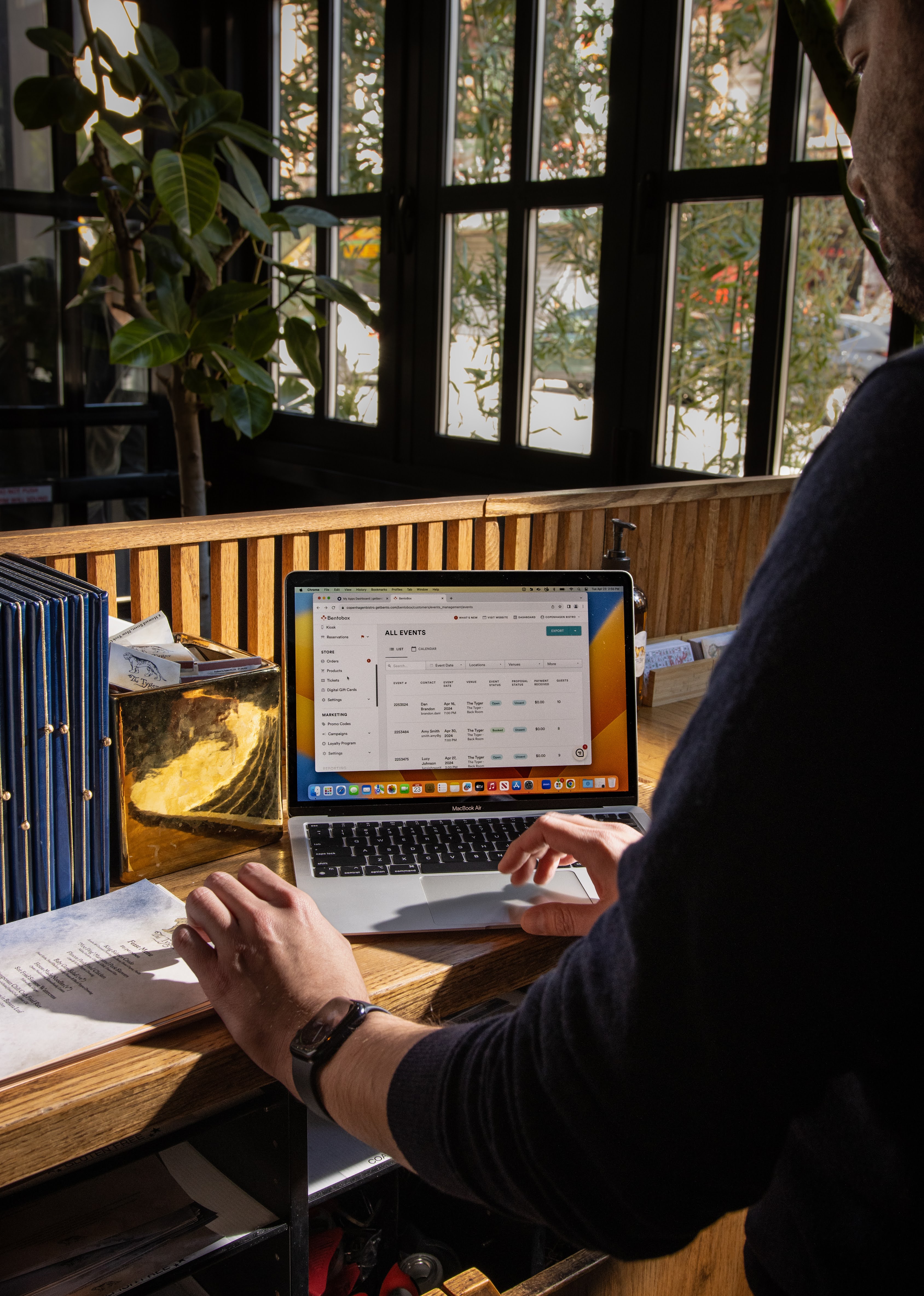Holidays
5 Ways to Maximize Revenue Between Thanksgiving and New Year's Day
Looking for easy wins for your restaurant’s holiday strategy? Here are some ideas to implement quickly.
To help restaurants maximize sales this holiday season, here’s a list of five quick actions that prepare you for the end-of-year rush. Add these final touches to your holiday planning to ensure your technology is working as hard as you are.

Your Holiday-Ready Toolkit
Better holiday planning means bigger holiday earnings. Make this season your most successful one yet.
1. Utilize Promos Codes
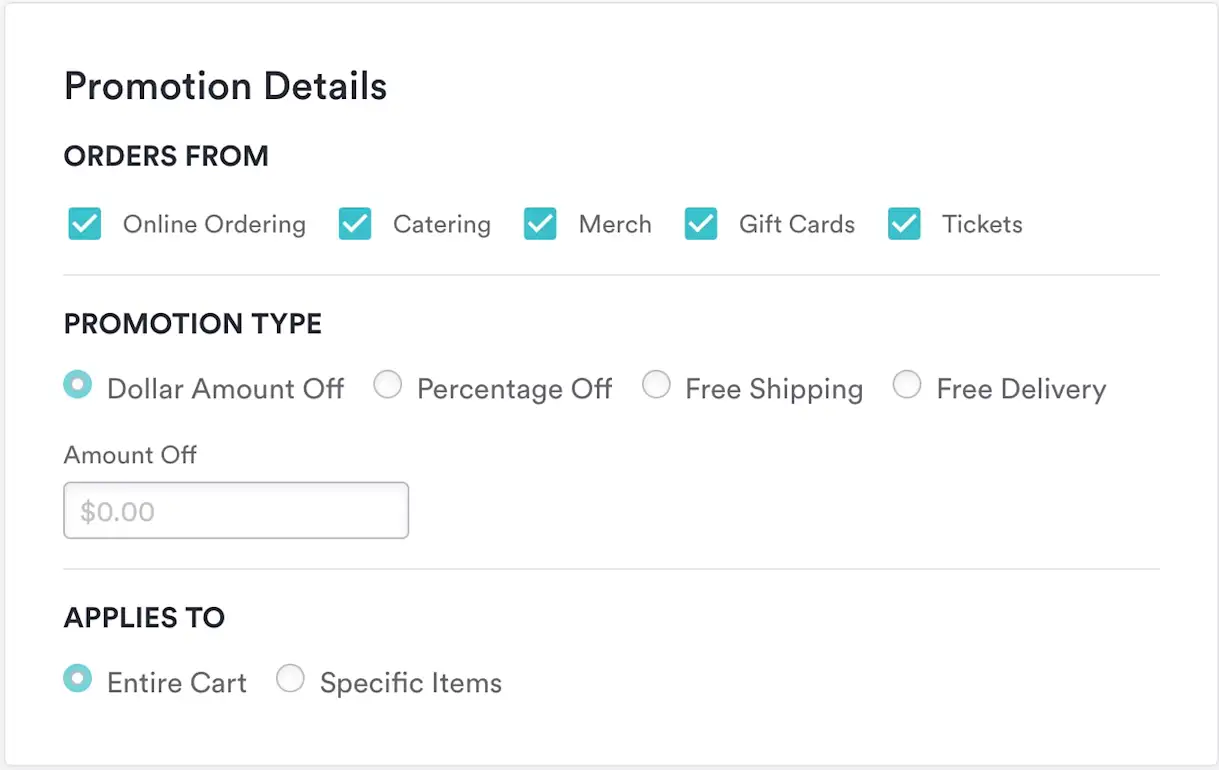
Throughout the holiday season, consumers are on high alert to find the best gifts for their loved ones. All the while, businesses apply every marketing tool in their kit to make their gifts stand out from the competition.
One of the most popular — and effective — of these marketing tools is sales discounts. Sales discounts come in many forms and can be applied across many marketing channels. For example, restaurants can run a sale on apparel or cookbooks in their Merchandise Store or extend promo codes for Ticketed Events or Online Catering.
Reign, a Canadian brasserie, promotes holiday catering packages on its website and uses pop-up alerts to notify visitors about its “Early Bird Promo.” If diners place a catering order before December 1st and use the promo code EARLYBIRD25 at checkout, they receive $25 off their order.
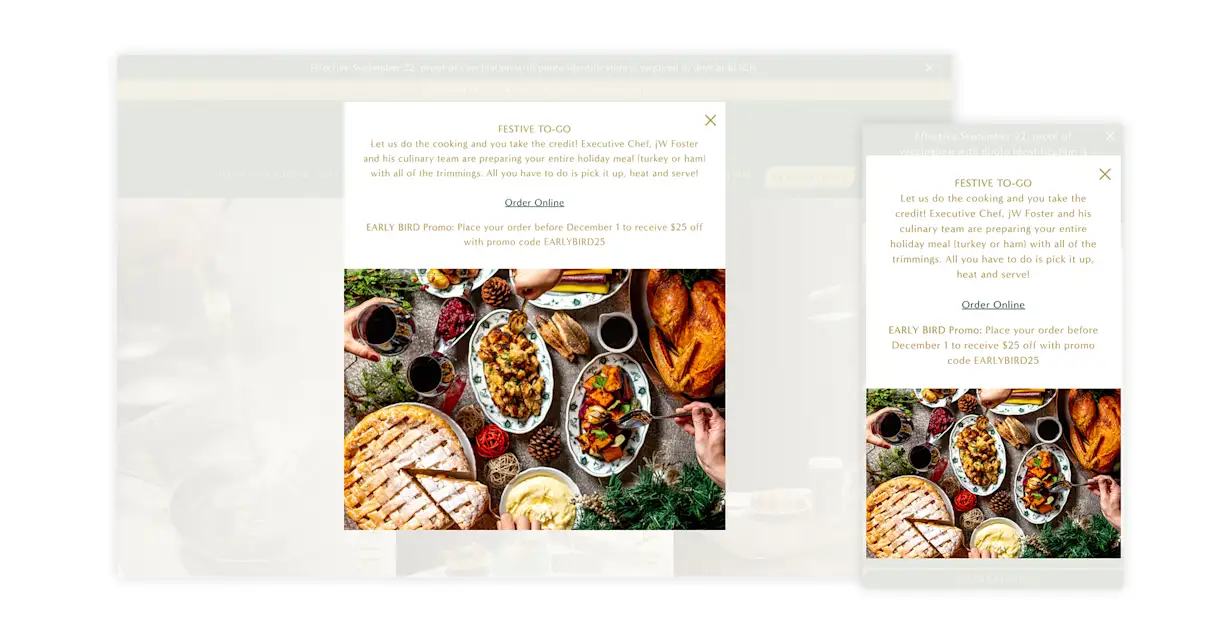
Three types of discounts are commonly applied to restaurant promotions: dollar amount off, percentage off, or free shipping/delivery.
After defining the discount type, the next step is for you to set the preferred conditions of the discount. For instance, if you want your promo code to incentivize large orders like catering, set a minimum order total (e.g., $50 off when you spend $200 or more).
Here are a few other limitations that can be set:
Limit number of times promo code can be used: This disables the code after a set number of redemptions, whether it’s only once or multiple times.
Limit discount to one item per order: Restricts any promotion discount to one item per order. For example, if a diner orders three burgers and uses a promo of $5 off a burger item, only one of those burgers will receive the $5 off.
You should also set start and end dates for promo codes. Setting a start date is valuable because you can set it weeks in advance, giving staff one less thing to worry about before the promotion. Setting an end date, after which the promo code no longer works,creates urgency from customers. This ultimately drives higher order rates and more revenue.
Lastly, once the promo code is activated, it’s important to get the word out. In addition to adding a pop-up alert to your website, promote the discount on social media, add a post to your Google Business Profile and send marketing emails to your customer list. Remember to include the code name, promo conditions, and availability date in all marketing materials, so consumers are fully aware of how and when to redeem the offer.
2. Use Diner Data to Optimize Marketing
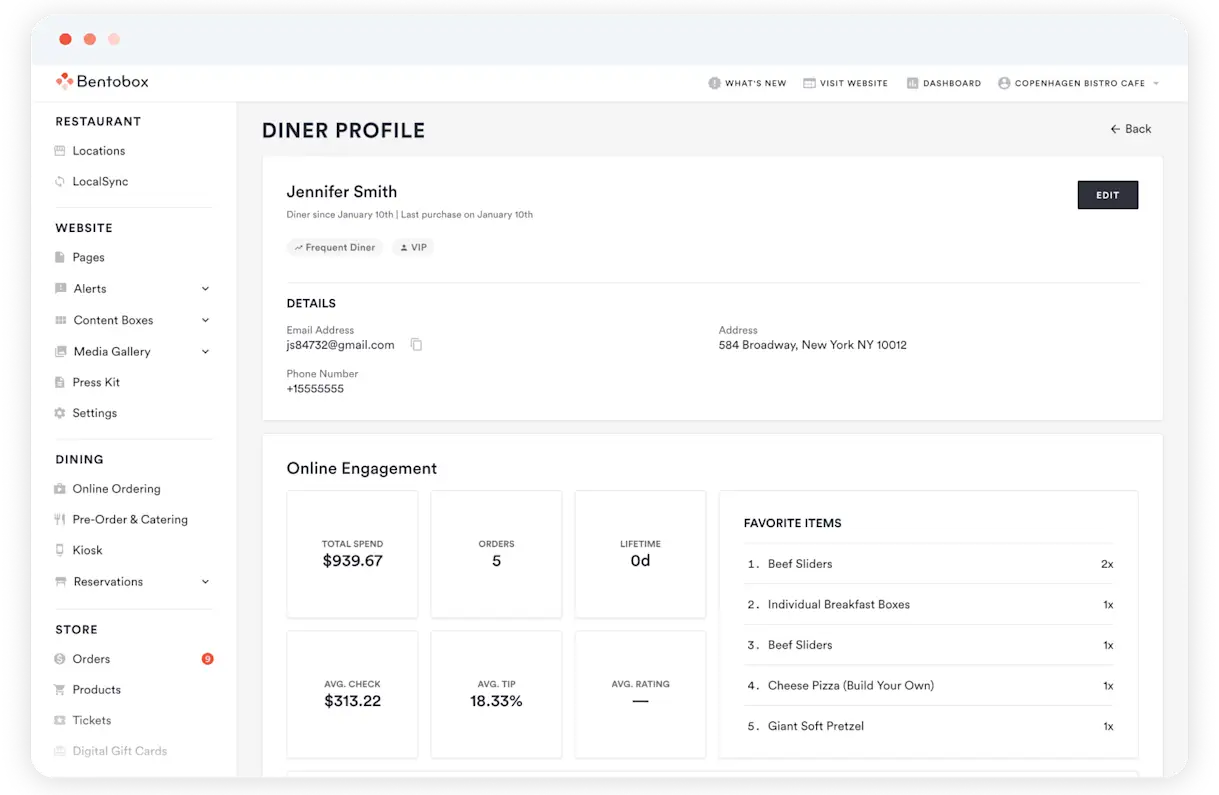
Thanks to restaurant technologies like the BentoBox Marketing & Commerce Platform, restaurants have access to more guest data than ever. Third-party platforms like delivery marketplaces have spent years applying this data to customer acquisition and retention campaigns, but now the power is back in restaurants’ hands.
Diner data comes in the form of contact information (names, phone numbers, email addresses, etc.) but also vital details like order history and frequency. Order details allow restaurants to build rich, strategic segments out of their customers, while contact information allows them to reach those segments with marketing outreach.
Use order frequency data to create segments for one-time diners, infrequent diners, occasional diners, and “regulars.” Send tailored marketing messages to each audience instead of sending a one-size-fits-all promotion to everyone.
For example, you can create one segment of customers who purchased gift cards last holiday season and another segment of customers who didn’t. You know that the first segment already sees the value of gift cards, which informs the language you use with them and means you might not need to include a discount. The group that didn’t purchase gift cards last year can receive a similar email that does include a discount to encourage them to purchase for the first time.
3. Turn on Automated Campaigns & Loyalty Programs
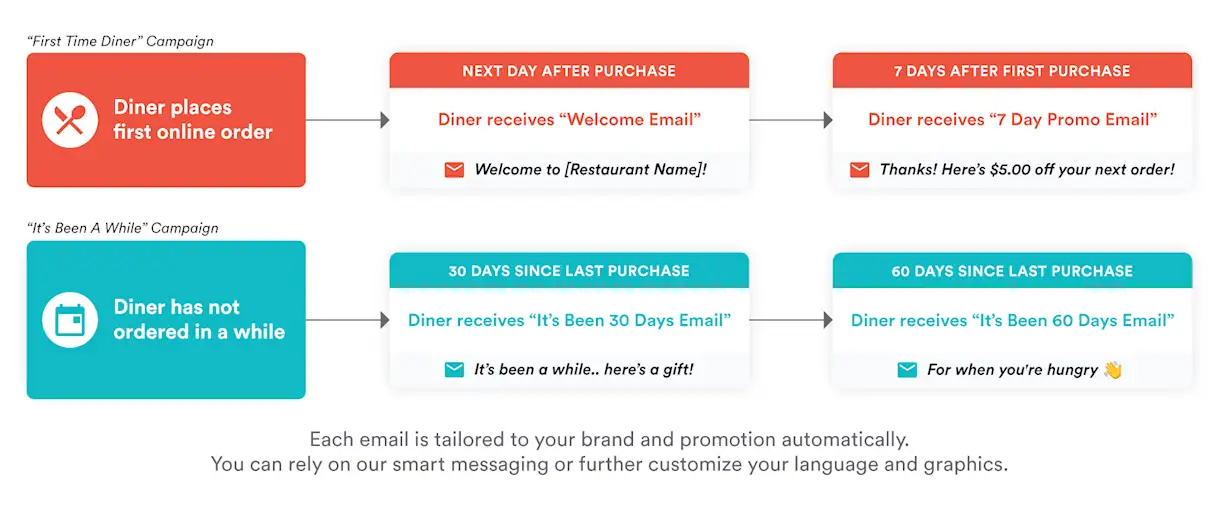
During the holiday season, you might be unable to give your undivided attention to segmenting diners and sending personalized emails. Thankfully, there’s a way to automate the process and drive orders in the background.
Automated marketing campaigns send emails to diners on an ongoing basis without any staff upkeep. This feature in the BentoBox Marketing & Commerce Platform is simple to turn on through the backend of your restaurant’s website. Once activated, diners automatically receive a series of marketing emails at intervals set by the restaurant (seven days after order, 30 days after order, 60 days after order, etc.)
Restaurants only need to set the intervals once, though they can analyze performance and update the types of emails they send as they see fit. Automated emails can be tailored to your brand with logos, images, and personalized messaging.
Here are some examples of the types of automated emails restaurants can send:
Welcome Email. This campaign sends a personal thank you message from the restaurant's owner, chef, or another staff member and can include unique features like a headshot at the bottom and personalized language that fits the restaurant’s brand. Call-to-action (CTA) buttons drive diners to take a preferred action (e.g., “Follow Us on Instagram!”).
7-Day Promo Email. This campaign sends an email one week after a diner’s first purchase, thanking them for ordering directly and offering a promo to order again (e.g., $5 off, 10% off or free delivery). Sending an email on the same day of the week as their first order increases the likelihood of them placing another order.
It’s Been 30 Days Email. This campaign sends an email when a diner hasn’t purchased in 30 days. This helps re-engage diners who enjoyed their last order but haven’t had the restaurant top-of-mind since that experience, especially if it includes an incentive like a promo code.
Read more: An Overview of Automated Marketing Campaigns
Because small businesses have limited resources, the marketing focus is typically on new customer acquisition than on increasing lifetime value from existing customers. Automated email marketing is one of the new tools allowing restaurants to address both types of customers. Another tool restaurants are using is digital loyalty programs.
With Loyalty Program, restaurants can recognize and reward their most loyal customers by gamifying the online ordering process. After a set number of orders or amount spent at the restaurant, diners enrolled in the program receive discounts or free items. As they progress through the program, they can also receive emails showing how close they are to unlocking new rewards.
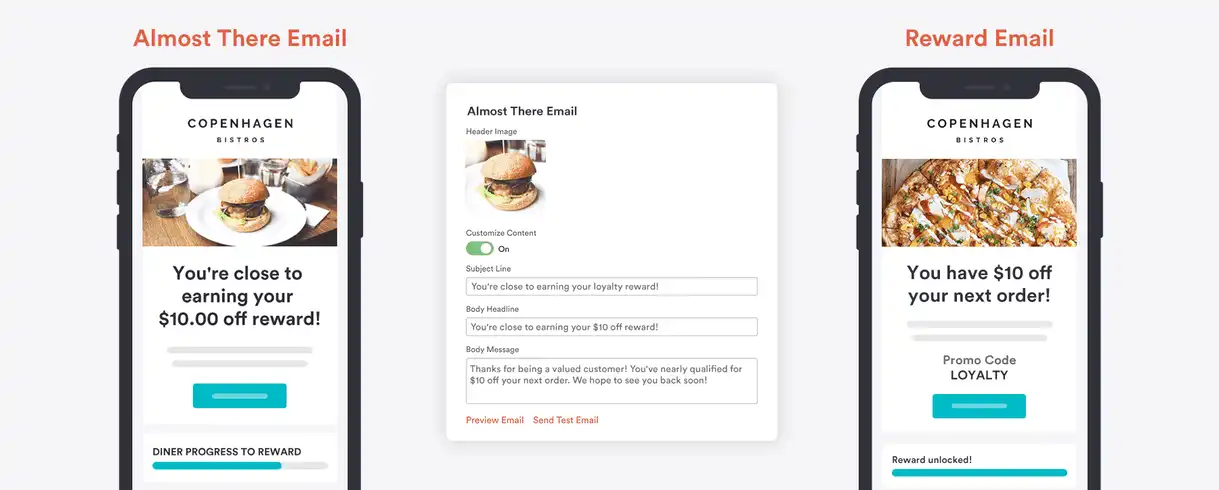
Loyalty programs increase lifetime customer value and foster stronger relationships with those customers. Since much of the program is automated, these benefits do not come at the expense of staff hours, which are needed more than ever on other elements of hospitality. It’s a win-win for restaurants and their customers, and ahead of the holiday season is the perfect time to set it up.
Read more: How to Build a Successful Restaurant Loyalty Program
4. Offer and Promote Last-Minute Holiday Gifts
As the days get busier leading up to the holidays, people often find themselves scrambling to purchase last-minute gifts for friends and family. Restaurants have a unique opportunity to cater to these last-minute gift shoppers.
You may already sell merchandise and other gifts through your website, but are you marketing your offerings effectively? This is important because, during the holiday season, restaurants selling merchandise don’t just compete with other restaurants; they also compete with retailers, who market their holiday offerings very aggressively.
To stand out from that noise, restaurants need to get creative with how they package and promote their holiday gift programs. This is easier said than done, but restaurants can turn merch into a powerful holiday revenue stream with the right mix of creative marketing tactics.
Read more: 8 Holiday Cost-Efficient Ideas for Restaurant Merchandise
For example, New York City restaurant Bubby’s curates holiday bundles and promotes them with beautiful photographs on Instagram. Each bundle includes a variety of merchandise like cookbooks, mugs, t-shirts and its beloved sour cream pancake mix (below). Creating bundles and baskets makes gifting easier for customers, and it encourages them to spend more because they're purchasing multiple products — similar to a combo meal or a prix fixe menu.

5. Host a New Year’s Eve Party and Sell Event Tickets
As restaurants consider all the ways to maximize profits this holiday season, hosting a New Year’s Eve bash should be high on their list. If you’re new to hosting New Year’s Eve parties, here are three types of events to consider:
New Year’s Eve reservations. Restaurants can open the books to limited-seating reservations, then promote the event with emails that make it easy to book a table. These evenings might consist of a prix-fixe dinner and a complimentary glass of champagne. Additionally, restaurants can sell tickets that act as a reservation for upfront revenue.
Private or semi-private buy-out. Private events often have high-profit margins, which makes them advantageous for restaurants. Consider closing off the evening for those who pay to rent the entire space out for the night. If restaurants want to keep seats open for the public, a semi buy-out, where the party is quartered to a specific section of the restaurant, is also an option.
Ticketed event. Hosting a ticketed New Year’s Eve party allows restaurants to obtain a guest list prior to the event to plan and prepare accordingly.
Once a restaurant chooses which type of event to host, success comes down to spreading the word and selling enough seats to make a profit. Emailing past customers is an effective way to do this, given that they are more likely to have a connection with the restaurant and want to go there for a special occasion. Adding a pop-up alert to the homepage of the website is another great way to attract interested parties.
Read more: 5-Step Checklist for New Year's Eve Restaurant Events

BentoBox Marketing & Commerce Platform
Deliver Smarter Hospitality
Want to stand out online, bring in more money, engage your diners, and streamline operations?
Recommended

Holidays
5-Step Checklist for New Year's Eve Restaurant Events
December 16, 2021
New Year’s Eve events are the pinnacle of the restaurant holiday season. Here’s how to plan, prepare, and promote a successful bash.
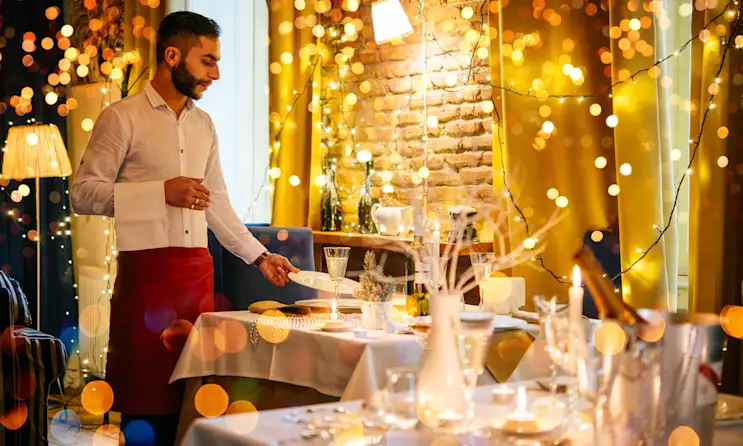
Holidays
8 Ideas for Restaurant Holiday Promotions & Events
October 5, 2021
Check out these examples of restaurant events, and see if they make sense for your upcoming holiday plan.
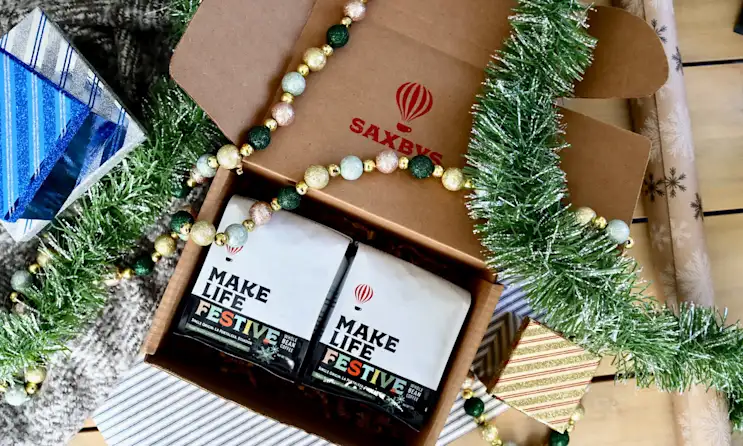
Holidays
6 Creative Ways to Promote Restaurant Gifts This Holiday
November 18, 2021
How to develop a strategic marketing plan to promote holiday restaurant gifts.
